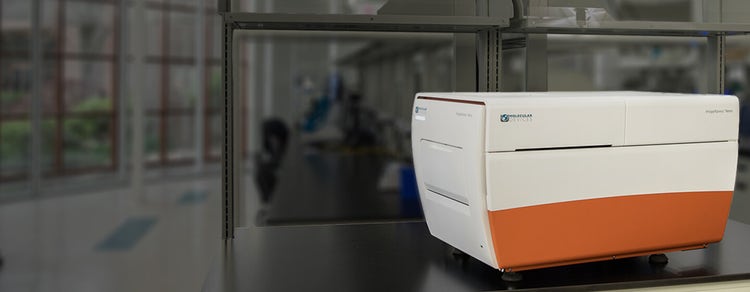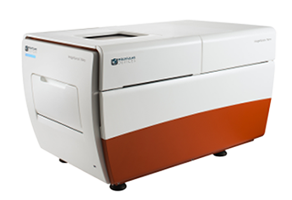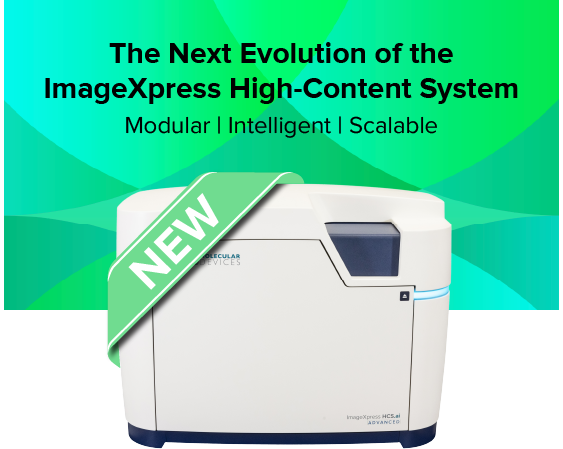

ImageXpress Nano Automated Imaging System
High-content imaging system for your everyday biological needs
Introducing ImageXpress HCS.ai High-Content Screening System — Modular, intelligent, and built for the future of high-content imaging
Building on the trusted legacy of the ImageXpress Nano system, Molecular Devices introduces the next evolution in high-content imaging — the ImageXpress HCS.ai High-Content Screening System. This fifth-generation modular platform is designed to scale effortlessly with your research, empowering you to move seamlessly from widefield imaging to advanced laser-based confocal modalities—all within one adaptable system.
Engineered for discovery without limits, ImageXpress HCS.ai system combines the renowned optical excellence you trust with revolutionary new capabilities: accelerated acquisition speeds, the intuitive, redesigned MetaXpress® Acquire software, and next-generation, AI-driven IN Carta® analysis to extract deeper insights from complex 2D and 3D models.
Whether you're progressing from widefield microscopy to confocal or expanding into advanced, AI-powered 3D analysis, the ImageXpress HCS.ai system delivers the speed, flexibility, and intelligence to keep your research at the cutting edge—built upon the innovation you already trust.

ImageXpress Nano: Fluorescence imaging platform within reach of every lab
The ImageXpress® Nano Automated Imaging System features a long life, solid state, light engine, and optics to reliably deliver the right assay sensitivity. Capture fine details of a variety of cellular and subcellular assays with this powerful and flexible fluorescent microscopy solution. The system includes MetaXpress® High-Content Image Acquisition and Analysis Software with tools for 2D and 3D imaging and time lapse analysis, as well as a range of needs from ease-of-use through to proprietary assay design.

Image label-free
Brightfield imaging allows for rapid acquisition without the use of harmful fluorescent agents.

Streamline image analysis
The modular toolbox in the MetaXpress® software allows for the quick setup of hundreds of routine assays. Choose from our optional selection of turnkey application modules for greater convenience.

Capture a diverse range of samples
With 2x to 60x magnification, the system offers the flexibility to image whole-well (C. elegans, zebrafish), as well as sub-cellular details (vesicles, organelles).
Features

Large field of view
An entire well of a 384-well plate can be captured in a single image at 4x magnification for faster throughput.

Automated Stages
Fully automated X, Y, and Z stages with resolution better than 25 nm.

Wide range of filters and objectives
The system can be configured with different filters or objectives (2-60x) to meet research needs.

Five fluorescent channels
The system can have up to 5 fluorescent filters installed at one time. The software allows up to 7 channels to be acquired at one time which enables multi-channel fluorescent and transmitted light imaging in one experiment.

High-speed autofocus
Laser autofocus enables quick, consistent focusing across plates, slides and uneven surfaces.

Environmental control option
Multi-day, time lapse and live cell assays can be run using the onboard environmental system with options for temprature, humidity, and CO2 control.
